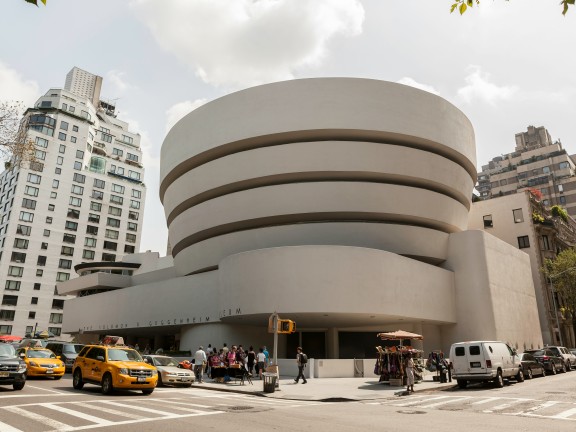The Guggenheim Museum's UNESCO World Heritage Triumph and Frank Lloyd Wright's Architectural Legacy

The Solomon R. Guggenheim Museum, an architectural gem situated in the heart of New York City, has recently garnered global recognition by securing a coveted spot on the UNESCO World Heritage List. This prestigious designation, announced at the World Heritage Committee meeting in Baku, Azerbaijan in 2019, solidifies the museum's position as a pivotal piece of American architectural heritage.
Constructed in 1959, the Guggenheim Museum's inclusion in the UNESCO list is part of "The 20th-Century Architecture of Frank Lloyd Wright," a collection that celebrates the visionary works of one of America's most revered architects. This esteemed group comprises eight seminal structures spanning five decades of Wright's illustrious career, each a testament to his groundbreaking approach to design.
Among the celebrated sites within this collection are Unity Temple, the Frederick C. Robie House, Fallingwater, and the Solomon R. Guggenheim Museum itself. These architectural marvels, dispersed across the United States, stand as enduring symbols of Wright's innovative spirit and his profound impact on modern architecture. Their addition as World Heritage Sites added them to the coveted list of only 28 American sites, and “the first modern architecture designation” in the country.
GPA President Zabeth Teelucksingh recently toured the Guggenheim museum, purposely chosen to be built by Loyd Wright, and remarked that, “There is a double focus upon visiting that makes the museum stand out - it creates a unique opportunity to appreciate both art and architecture in a single visit.”
 UNESCO's decision to include the Wright structures on its World Heritage List underscores their outstanding universal value. These buildings are celebrated for their harmonious integration of form and function, their organic relationship with the natural world, and their ability to resonate with the evolving American experience while transcending geographical and cultural boundaries.
UNESCO's decision to include the Wright structures on its World Heritage List underscores their outstanding universal value. These buildings are celebrated for their harmonious integration of form and function, their organic relationship with the natural world, and their ability to resonate with the evolving American experience while transcending geographical and cultural boundaries.
The road to UNESCO recognition was not without its challenges. Over 15 years of meticulous effort, spearheaded by the Frank Lloyd Wright Building Conservancy and supported by dedicated scholars and volunteers, culminated in the successful nomination of the Wright sites. The process involved extensive revisions and collaboration to ensure the nomination's alignment with UNESCO's rigorous standards.
A significant milestone for celebrating American cultural, historical and architectural heritage, the enduring influence of Frank Loyd Wright will continue to be protected and promoted both at the national and international level for decades to come. Its striking spiral design and commitment to pushing the boundaries of art and architecture make the Guggenheim a must-visit destination for art and architecture enthusiasts alike.
